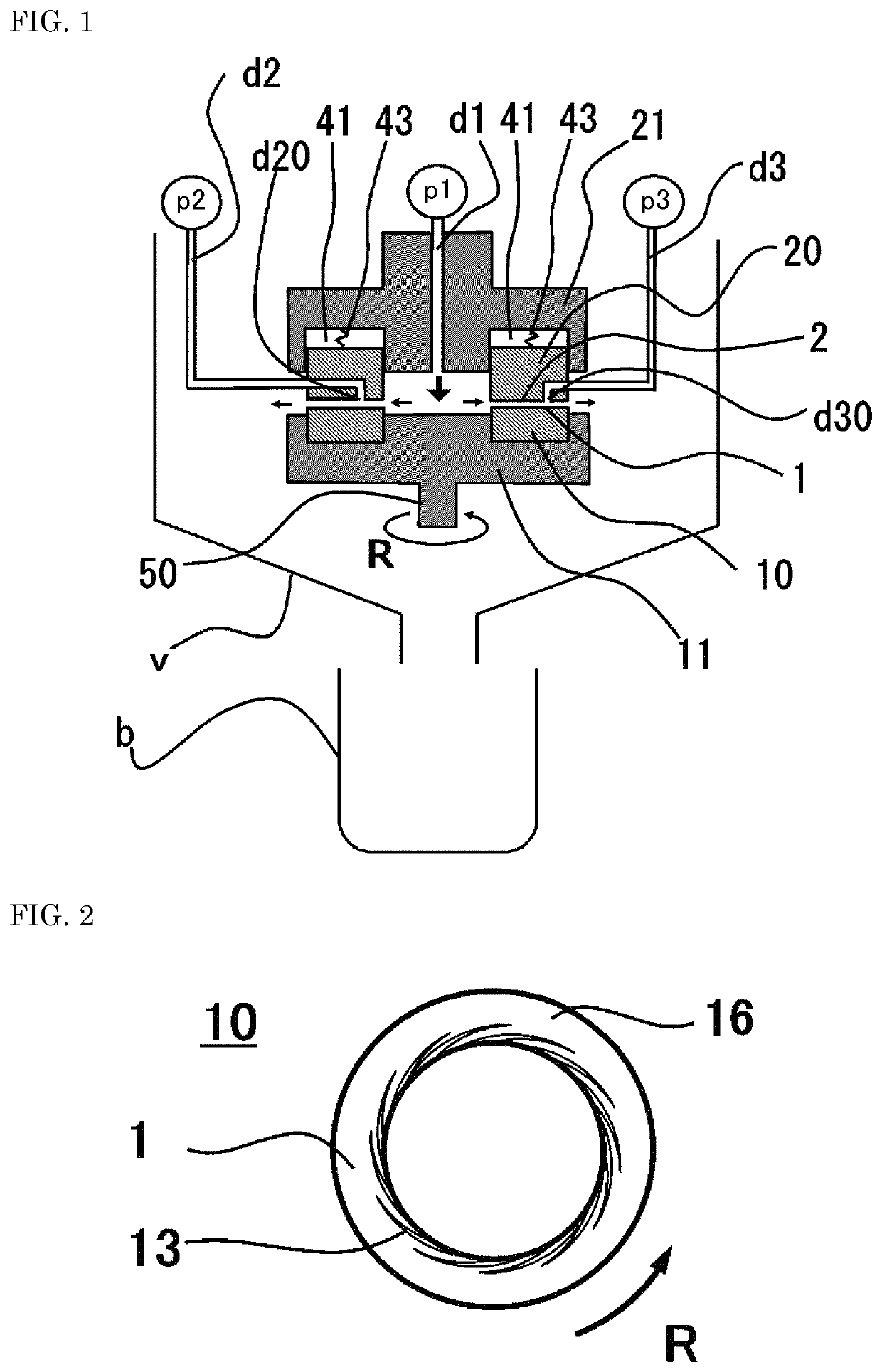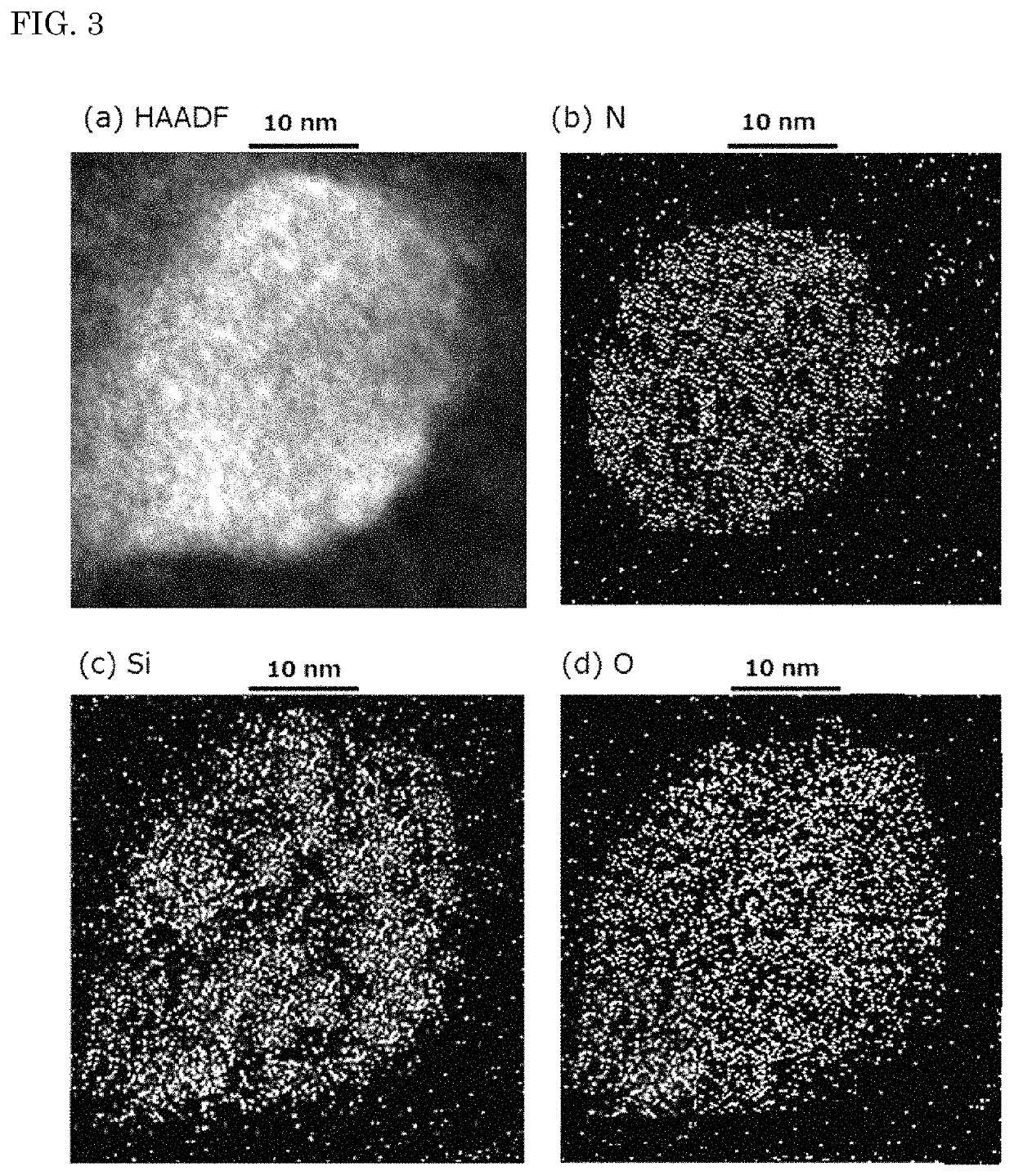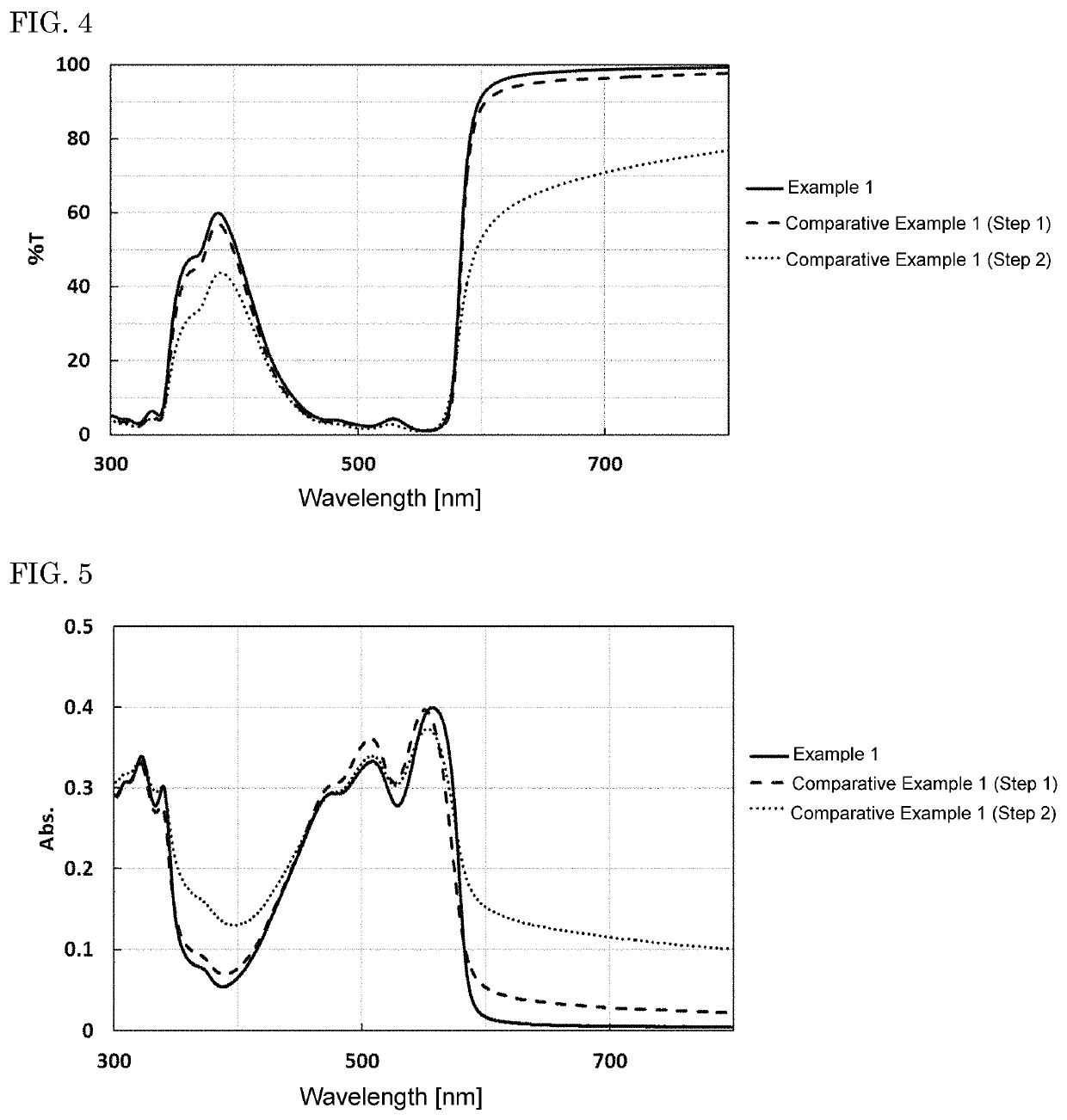Method for producing organic pigment microparticles
a technology of organic pigment and microparticles, which is applied in the direction of transportation and packaging, mixing, rotary stirring mixers, etc., can solve the problems of reducing the crystallinity of the intended organic pigment microparticles, requiring a large amount of power, and unable to remove impurities, so as to suppress growth and/or aggregation, improve solvent resistance, and improve dispersibility
- Summary
- Abstract
- Description
- Claims
- Application Information
AI Technical Summary
Benefits of technology
Problems solved by technology
Method used
Image
Examples
example
[0123]Hereinafter, the present invention is explained in more detail with reference to examples. However, the present invention is not limited to the following examples. In the following examples, the first fluid (hereinafter, also referred to as liquid A) refers to the first fluid to be processed which is introduced from the first introduction part d1 of the apparatus shown in FIG. 1, and similarly, the second fluid (hereinafter, also referred to as liquid B) refers to the second fluid to be processed which is introduced from the second introduction part d2 of the apparatus. The third fluid (hereinafter, also referred to as liquid C) refers similarly to the third fluid to be processed which is introduced from the third introduction part d3 of the apparatus.
examples 1 to 4
oated PR254 Microparticles
[0124]Examples 1 to 4 show examples in which PR254 microparticles of an organic pigment of a diketopyrrolopyrrole were coated with silicon oxide. The first fluid and the second fluid were prepared using CLEARMIX (product name: CLM-0.8 S, M. Technique Co., Ltd.). Specifically, based on the formulation of liquid A shown in Examples 1 to 4 of Table 1, respective raw materials were weighed, and mixed homogeneously by stirring using CLEARMIX at preparation temperature of 25° C. and at the rotor rotational speed of 10,000 rpm for 30 min to prepare liquid A. Based on the formulation of liquid B shown in Examples 1 to 4 of Table 1, respective raw materials were weighed, and mixed homogeneously by stirring using CLEARMIX at preparation temperature of 40° C. and at the rotor rotational speed of 20,000 rpm for 30 min to prepare liquid B.
[0125]For the substances listed in Table 1, acetic acid is acetic acid (99.7%, Kanto Chemical Co., Inc.), TEOS is tetraethyl orthosil...
example 5
xide Coated PR254 Microparticles
[0155]The first fluid and the second fluid were prepared using CLEARMIX (product name: CLM-0.8 S, M. Technique Co., Ltd.). Specifically, based on the formulation of liquid A shown in Table 6, respective raw materials were weighed, and mixed homogeneously by stirring using CLEARMIX at preparation temperature of 25° C. and at the rotor rotational speed of 10,000 rpm for 30 min to prepare liquid A. Based on the formulation of liquid B shown in Table 6, respective raw materials were weighed, and mixed homogeneously by stirring using CLEARMIX at preparation temperature of 40° C. and at the rotor rotational speed of 20,000 rpm for 30 min to prepare liquid B.
[0156]The substances listed in Table 6 are the same as those in Examples 1 to 4.
[0157]Next, the prepared first fluid, second fluid and third fluid were mixed in the fluid processing apparatus shown in FIG. 1 under the operating conditions (introduction flow rate, introduction temperature) described in Ta...
PUM
| Property | Measurement | Unit |
|---|---|---|
| time | aaaaa | aaaaa |
| primary particle diameter | aaaaa | aaaaa |
| primary particle diameter | aaaaa | aaaaa |
Abstract
Description
Claims
Application Information
 Login to View More
Login to View More - R&D
- Intellectual Property
- Life Sciences
- Materials
- Tech Scout
- Unparalleled Data Quality
- Higher Quality Content
- 60% Fewer Hallucinations
Browse by: Latest US Patents, China's latest patents, Technical Efficacy Thesaurus, Application Domain, Technology Topic, Popular Technical Reports.
© 2025 PatSnap. All rights reserved.Legal|Privacy policy|Modern Slavery Act Transparency Statement|Sitemap|About US| Contact US: help@patsnap.com



